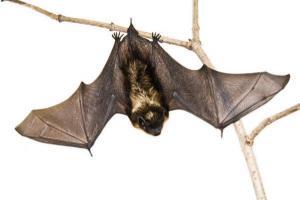Researchers studying the echolocation behavior in bats have discovered that the diminutive flying mammals emit exceptionally loud sounds -- louder than any known animal in air.
Annemarie Surlykke from the Institute of Biology, SDU, Denmark, and her colleague, Elisabeth Kalko, from the University of Ulm, Germany, studied the echolocation behavior in 11 species of insect-eating tropical bats from Panamá, the findings of which are reported in this weeks'
PLoS ONE.

|
| ©iStockphoto/Alexei Zaycev
|
| Bats emit their echolocation calls at ultrasonic frequencies in order to get echoes from small insects.
|
The researchers used microphone arrays and photographic methods to reconstruct flight paths of the bats in the field when these nocturnal hunters find and capture their insect prey in air using their sonar system. Surlykke and Kalko took this information as a base to estimate the emitted sound intensity and found that bats emit exceptionally loud sounds exceeding 140 dB SPL (at 10 cm from the bat's mouth), which is the highest level reported so far for any animal in air. For comparison, the level at a loud rock concert is 115-120 dB and for humans, the threshold of pain is around 120 dB.


Comment: Yes, it is. But it is also unfortunate that certain people accuse others of what they, themselves are doing.